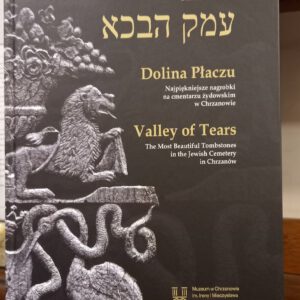Description
Wprowadzenie i opracowanie: Adam Kaźmierczyk i Przemysław Zarubin
Translated into English by Anna Sekułowicz
Żydzi aszkenazyjscy, którzy osiedlili się w Koronie Polskiej, a następnie rozwinęli najliczniejszą diasporę żydowską w ówczesnym świecie, stworzyli również wyjątkową strukturę samorządu ziemskiego. Niestety mimo fascynacji wielu badaczy fenomenem Sejmu Czterech Ziem czy samorządem żydowskim postęp badań nad tymi instytucjami był utrudniony ze względu na zniszczenie wielu źródeł częściowo przez zaborców, innych w wyniku strat poniesionych w trakcie II wojny światowej, a szczególnie w czasie powstania warszawskiego. Nie przetrwały oryginalne księgi wpisów ziemstw i waadów (w przeciwieństwie do waadu litewskiego), ale także instytucji państwa polsko-litewskiego – skarbu koronnego, trybunałów koronnych (zwłaszcza skarbowego), sądu asesorskiego, wielu kluczowych sądów grodzkich. Pozostałe dokumenty są rozproszone w archiwaliach różnej proweniencji i trudno dostępne (głównie ze względu na rozproszenie i stan zachowania). Większość z nich przetrwała w aktach sądów nieżydowskich, zwłaszcza grodzkich, które traktowane były jako księgi wieczyste.
The Ashkenazi Jews who settled in the Polish Crown and then developed the largest Jewish diaspora at that time also created a unique structure of regional government. Unfortunately, despite the fascination of many researchers with the phenomenon of the Council of the Four Lands or Jewish self-government, the progress of research on these institutions has been hindered due to the destruction of many sources, partly during the period of partitions and partly as a result of losses suffered during World War II, especially during the Warsaw Uprising. Original registers of Jewish Councils (territorial communities) and Vaads (congresses of community representatives) did not survive (in contrast to the Lithuanian Vaad) and neither did those of the institutions of the Polish-Lithuanian state: the Crown Treasury, the Crown Tribunals (especially the Treasury Tribunal), the Assessorial Court, and many key castle courts (sądy godzkie). Other documents are scattered in archives of varying provenance and difficult to access (mainly due to their dispersion and state of preservation). Most of them survived in the files of non-Jewish courts, especially castle courts, and were treated as public records.











